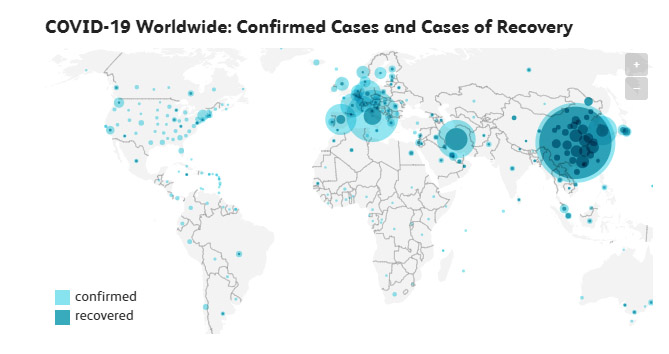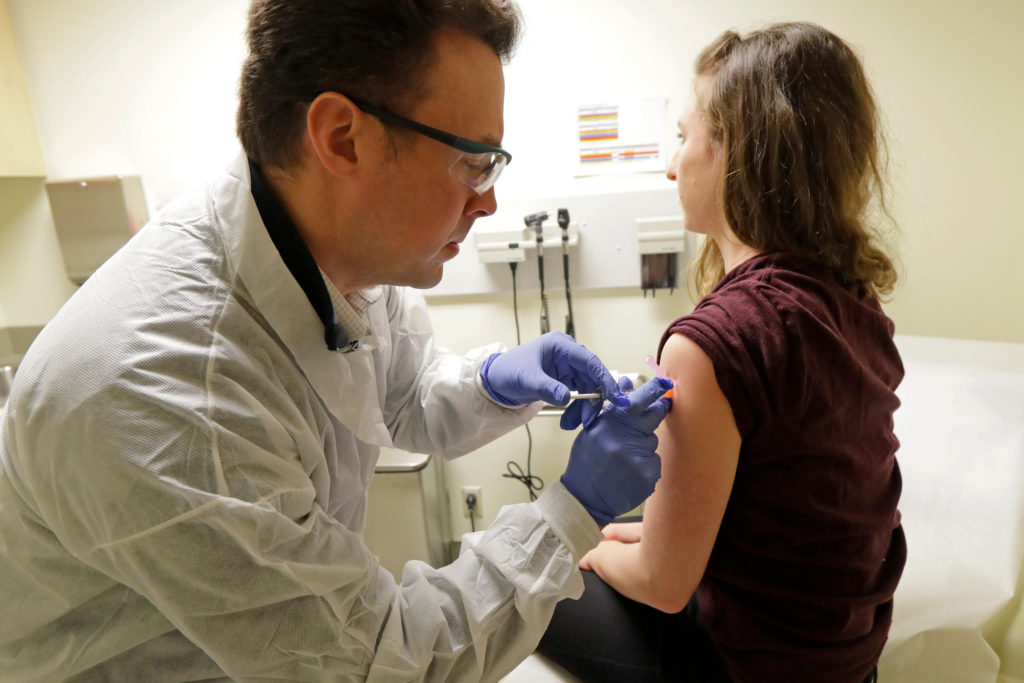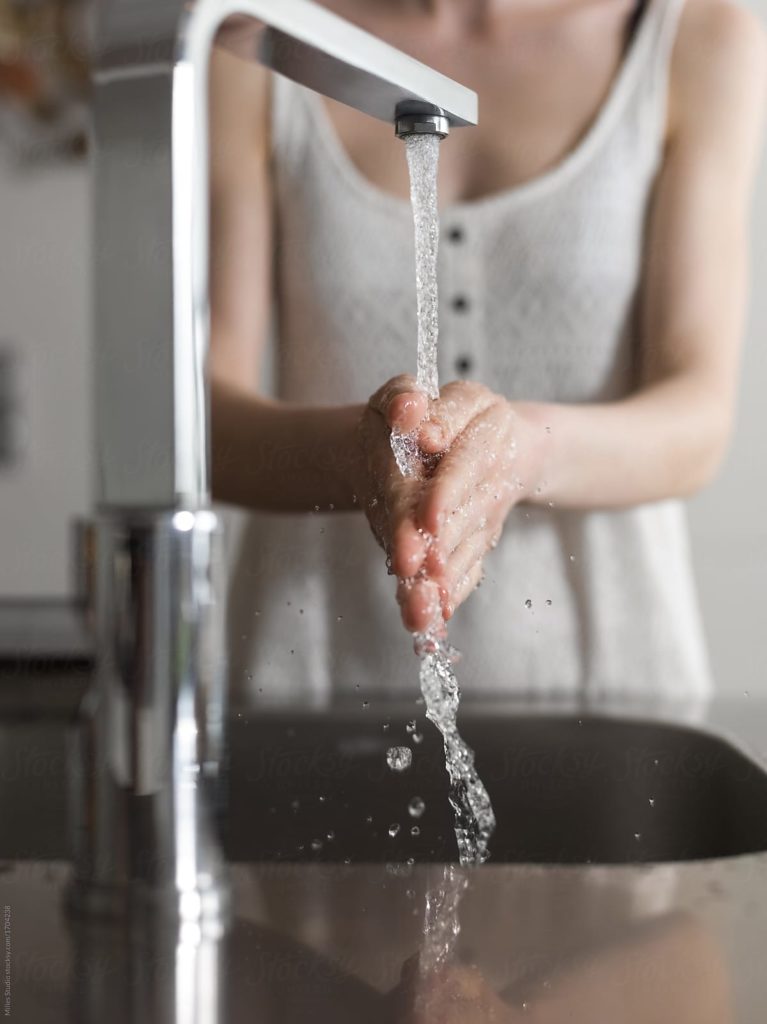
The new coronavirus disease, called COVID-19, has appeared and spread extremely quickly, making its way to over 100 countries since its December 2019 discovery in China. This particular type of respiratory disease is caused by a virus called SARS-CoV-2. It’s part of a larger family of coronaviruses, the majority of which cause only the common cold.
More dangerous types of coronavirus include Middle East respiratory syndrome (MERS-CoV) and severe acute respiratory syndrome coronavirus (SARS-CoV). Like these more serious strains, COVID-19 can cause anything from mild respiratory problems to pneumonia or death.
Citing a mortality rate of 3.4%, the World Health Organization has declared COVID-19 a public health emergency.
How Many People Have Coronavirus?
As of March 15, 2020, the World Health Organization has confirmed 153,517 cases of COVID-19 worldwide.
-
-
- Cases in China: 81,048
- Cases outside of China: 72,469
- Cases in the United States: 1,678
- Cases in India 114 deaths 2
- Countries affected: 143
-
How did it start?
The World Health Organization (WHO) was first alerted to several cases of pneumonia in Wuhuan, a city in the Chinese province of Hubei, on December 31, 2019. According to the first WHO situation report on the coronavirus disease, the cases of pneumonia had no known cause, and totaled 44 by January 3.
China’s National Health Commission originally traced exposure to a seafood market in Wuhan, but later reports indicate that the market was unlikely to be the only source of the virus. By January 7, the exact strain—a new type of coronavirus—was identified, and initially named 2019-nCoV.
In February, the World Health Organization officially began calling the disease COVID-19.
First death
A 61-year-old Chinese man was the first known person to die from coronavirus-related illness; he was admitted to the hospital with pneumonia and acute respiratory distress syndrome. Media began reporting his death on January 10, adding he was a regular customer at the Wuhan seafood market. By January 31, there were 213 deaths and 9,720 confirmed cases of COVID-19 in China.
First Spread Outside of China

- Thailand reported its first case of COVID-19 on January 13. The infected individual had traveled there from Wuhan.
- Japan reported its first case on January 15, also in a person who had visited Wuhan.
Washing your hands is one of the best ways to avoid sickness and prevent the transmission of germs, including the coronavirus (COVID-19) virus. Washing hands thoroughly with soap and clean water can be a crucial defense against diseases that spread easily from person-to-person, and keep you, your loved ones, and the community healthy as a result. However, hand washing is only effective when done correctly and consistently.
It appears that while the infection is mild in some people, it can cause a severe respiratory (lung) illness similar to SARS and may result in death.
The World Health Organization has decided COVID-19 is globally widespread enough to be considered a pandemic. This is because the virus is new, so people’s immune systems are not prepared to fight it, thus permitting the virus to spread rapidly from person to person.
COVID 19 Transmission
Washing your hands is one of the best ways to avoid sickness and prevent the transmission of germs, including the coronavirus (COVID-19) virus. Washing hands thoroughly with soap and clean water can be a crucial defense against diseases that spread easily from person-to-person, and keep you, your loved ones, and the community healthy as a result. However, hand washing is only effective when done correctly and consistently.
It appears that while the infection is mild in some people, it can cause a severe respiratory (lung) illness similar to SARS and may result in death.
The World Health Organization has decided COVID-19 is globally widespread enough to be considered a pandemic. This is because the virus is new, so people’s immune systems are not prepared to fight it, thus permitting the virus to spread rapidly from person to person.
- If you’re in close contact (within about six feet) with an infected person
- If you’re exposed to respiratory droplets when an infected person coughs or sneezes
- If a person touches a surface or object that has the virus on it, and then touches their own mouth, nose, and possibly eyes, they may contract COVID-19, but the CDC says it’s not the main way the virus spreads.
If a person touches a surface or object that has the virus on it, and then touches their own mouth, nose, and possibly eyes, they may contract COVID-19, but the CDC says it’s not the main way the virus spreads.
High risk groups
- Older adults
- People with lung disease
- People with heart disease
People in these groups—or anyone with a chronic medical condition—should take extra precautions to avoid those who are sick, avoid non-essential travel, and avoid crowds. Stay home as much as possible if your area is experiencing community spread, and seek medical attention at the earliest symptoms.
Symptoms
The four community-acquired coronaviruses usually cause “cold” symptoms in the upper respiratory tract, such as:

- Runny nose
- Cough
- Sore throat
- Fever
- Headache
- Malaise
What are coronaviruses?
- Droplets (after someone who has the virus coughs or sneezes)
- Touch (e.g., shaking hands with an infected person or touching an object that contains the virus and then touching your mouth, eyes, or nose prior to washing your hands)
- Feces (fecal-oral spread from infected patients; rare)
Types of coronaviruses
- 2019 novel coronavirus (COVID-19, originally called 2019-nCOV)
- Severe acute respiratory syndrome coronavirus (SARS-CoV)
- Middle East respiratory syndrome (MERS-CoV)
Diagnosis
Treatment
- Taking a medication, like paracetamol to reduce your fever
- Using a cool-mist humidifier to help soothe your cough
- Rest
- Drinking fluids
Prevention
Treatment

- Scrub your hands with soap and water for at least 20 seconds (try singing the Happy Birthday song twice for proper timing)
- Avoid touching your eyes, nose, and mouth
- Avoid being around people who are sick
- Using a regular household detergent and water, clean household and work surfaces and objects frequently, especially ones that are touched a lot, such as doorknobs, remote controls, and tables.
When should you wash your hands
Hands should be washed often. According to the Centers for Disease Control and Prevention (CDC), the following are key times when hand washing is especially important to help prevent the spread of germs and viruses:

- Before, during, and after food preparation
- Before eating food
- Before and after coming into contact with a sick person who has vomiting or has diarrhea
- Before and after treating a cut or wound
- After using the bathroom
- After changing a diaper
- After cleaning a child who has used the bathroom
- After blowing your nose, coughing, or sneezing
- After coming in contact with an animal, animal feed, or animal waste
- After touching pet food or pet treats
- After handling garbage
If you don’t have immediate access to soap and water in these circumstances, you should use an alcohol-based hand sanitizer.
Speak NAMASTE rather than shaking hands

How to properly wash your hands?
- Turn on the Water: Clean, running water is more important than temperature. Turn on the water and get your hands wet. You can turn the water off or leave it running, depending on your preference. Turning it off saves water, but it will increase the number of times you touch the faucet, which will expose you to germs that are on the faucet handles.
- Lather Up: Soap is important. It helps lift the germs and microbes off your skin while you wash your hands and makes the whole process more effective. Studies have shown that it’s no better to use antibacterial soap than regular soap, and the overuse of triclosan, a commonly used ingredient in antibacterial soap, could actually contribute to antibiotic resistance.
- Scrub for at Least 20 Seconds: Most people don’t scrub their hands nearly long enough. Twenty seconds doesn’t sound like a long time but it is much longer than you would imagine. How do you make sure you are washing the proper amount of time? Sing the Happy Birthday song to yourself (or out loud) twice. Make sure you are completely covering your hands with soap and water. Scrub between your fingers, under your nails, all over your thumbs and up your wrists. There are germs all over your ands, not just on your palms and fingertips.
- Rinse the Soap (and Germs) Away: Rinsing is ultimately how you get the germs off of your hands, so it’s really the most important step. Again, it’s important to use clean running water. Dipping your hands in a stagnant pool of water (or even standing water in the sink) is not the same as rinsing the soap off with clean, running water. If all you have is a pool of water—for instance, you are outside and have no access to running water—it is better than nothing and certainly preferable to not washing your hands at all. Many people don’t realize that washing your hands doesn’t typically kill germs, it is simply the most effective way to get them off of your hands so you don’t spread them to yourself or others. Rinsing allows you to wash the germs and microbes away, drastically cutting down the chances that you will spread disease.
- Dry Your Hands: Using a paper or cloth hand towel, dry your hands completely. If you are using cloth hand towels, they should be washed frequently—especially if they are in a shared household where they could become contaminated easily.
- Turn Off the Water: If you want to save water, go ahead and turn the water off after you get your hands wet and then on and off again when you need to rinse them. According to the CDC, “While some recommendations include using a paper towel to turn off the faucet after hands have been rinsed, this practice leads to increased use of water and paper towels, and there are no studies to show that it improves health.” Use your best judgment here. You also might want to consider using your paper towel to open the bathroom door as you’re leaving if you’re using a public restroom.
Sex and Love in the Time of Coronavirus
The novel coronavirus responsible for COVID-19 has been quickly spreading around the world. In the United States, as well as in other countries, this has led to increasing calls to engage in social distancing practices. People have been told to minimize contact with others and avoid gatherings of more than 100, 50, or even 10 people. In areas where COVID-19 is actively spreading, people may be encouraged to work from home, if possible, and maintain distance from other people to avoid the risk of infection. That makes many people wonder if it’s safe to date and/or have sex during the coronavirus pandemic.
This is not a simple yes or no question. The level of risk will be different depending on a variety of factors, including whether:
- You are trying to meet someone new
- You have an existing partner(s)
- You live with your partner(s)
- You and your partner(s) are able to generally avoid contacts outside your household(s)
- You or your partner(s) are in a high-risk category
- You or your partner(s) have symptoms and/or have tested positive for COVID-19
If you, someone you live with, or someone you are involved with has symptoms suggestive of COVID-19, including coughing, fever, or shortness of breath, you should take a timeout. No dating. No sex. Instead, you should call your doctor, ask if testing is appropriate, and figure out whether (and how) you should be seen.
You should try to stay away from other people, including other household members, and you should take appropriate precautions to minimize the risk of transmitting the illness to others. (If you have the flu or a cold, there is no downside to this. You’re still trying to keep the rest of your household from getting sick.) You should not go to the hospital unless your doctor recommends it or you have symptoms that require immediate treatment.
Can Coronavirus Be Sexually Transmitted?
The question of whether COVID-19 is sexually transmitted is largely irrelevant to the risks of having sex with someone who is infected. Coronavirus is transmitted, among other ways, through droplet infection. Secretions from the mouth (consisting of saliva and mucus) and nose can contain the virus. Even if you don’t kiss the person you are having sex with, you are likely to be breathing closely together. You are likely to be touching the same surfaces, which someone could have touched with soiled fingers. Therefore, it doesn’t much matter if coronavirus can be transmitted through sex.
If you’re close enough to have sex, you’re close enough to be exposed to COVID-19 through other means.
That said, although it is soon to have data on COVID-19, there is no evidence that previous types of coronavirus have been found in semen or vaginal secretions. However, different types of coronavirus have been found in different ranges of bodily fluid.1
Sex With an Existing Partner You Live With
The risk of sex in the time of coronavirus depends a lot on who you are having sex with. If you are currently living with someone, and sharing a bed with them, it doesn’t much matter if you’re having sex. If one of you has COVID-19, the other will probably be exposed to it. In China, transmission within households was a major source of new COVID-19 infections.2 Sex is unlikely to add any additional risk. Therefore, if you two want to have sex, fears of coronavirus are not a good reason not to go for it. (This is assuming you are both asymptomatic. If one of you has symptoms, or tests positive, you should follow quarantine guidelines to reduce your risk as much as possible.)
Sex With an Existing Partner You Don't Live With
If you have an existing partner whom you don’t live with, you start having to think about risk and social distancing. If you each live alone, are working from home, are avoiding social situations, and are only dating each other, the calculation will be very different than if you each have a bunch of roommates, or if one of you works in a crowded environment. In the first case, if you decide to have sex, you’re mostly just risking each other. If one of you is infected with COVID-19 and the other one becomes infected, you’re not likely to expose many other people. Assuming neither of you has symptoms, you can each figure out your own tolerance for risk based on Centers for Disease Control and Prevention (CDC) guidelines for your community.
It’s different if one or both of you is interacting with a number of different people in close quarters. At that point, you need to start considering the fact that you are each taking on additional risk for everyone you are closely involved with. The amount of risk will vary depending on how common COVID-19 is in your community.
Meeting New People
Pandemics are a great time to explore online dating—not just meeting, but actually dating online. Many communities have already closed down bars, restaurants, and other gathering places. More will soon be doing so. Going out and meeting new people every night isn’t a great idea in a society that is trying to limit the transmission of a very contagious virus. Instead, try hanging out on a video chat or sending long e-mails. Watch Netflix together from your own couches. Engage in sexy texting and look forward to when it is a reasonable choice to meet up and play in person.
If you decide that getting together is reasonable given the current status of the virus in your community, agree in advance to cancel if either of you has symptoms or a fever. Plan to cancel ahead of time if one of you has a known exposure to someone infected with or suspected of having COVID-19. Follow the CDC’s hygiene guidelines for reducing infection risk as well as any specific guidelines for your community.
Social distancing is going to be hard for everyone. The ways in which it will be difficult will be different depending on who you are, how you live, and how you love. In this time, it’s critical to do what you can to maintain your emotional health as well as your physical health. For some people that means doing something good for their community. Others need to focus on distractions such as gaming or reading. Still others need to find ways to get their bodies moving – in isolation or at home. Many need some form of touch. That’s not a failure. It’s just something to figure out how to accomplish as safely as possible. Keep informed. Think about risks. Then do what you can to manage those risks without losing your mind.






